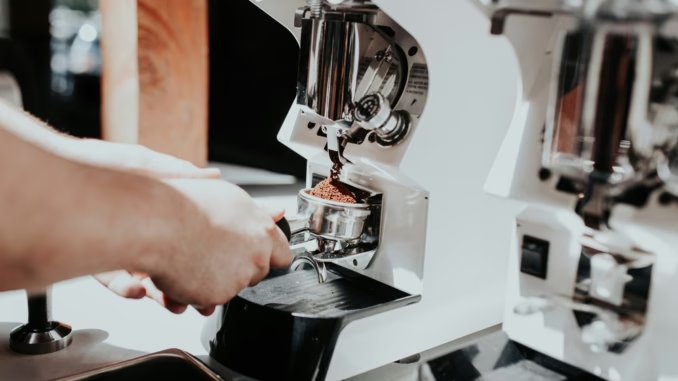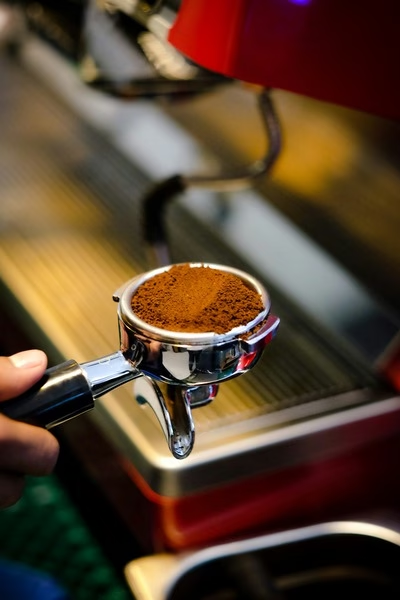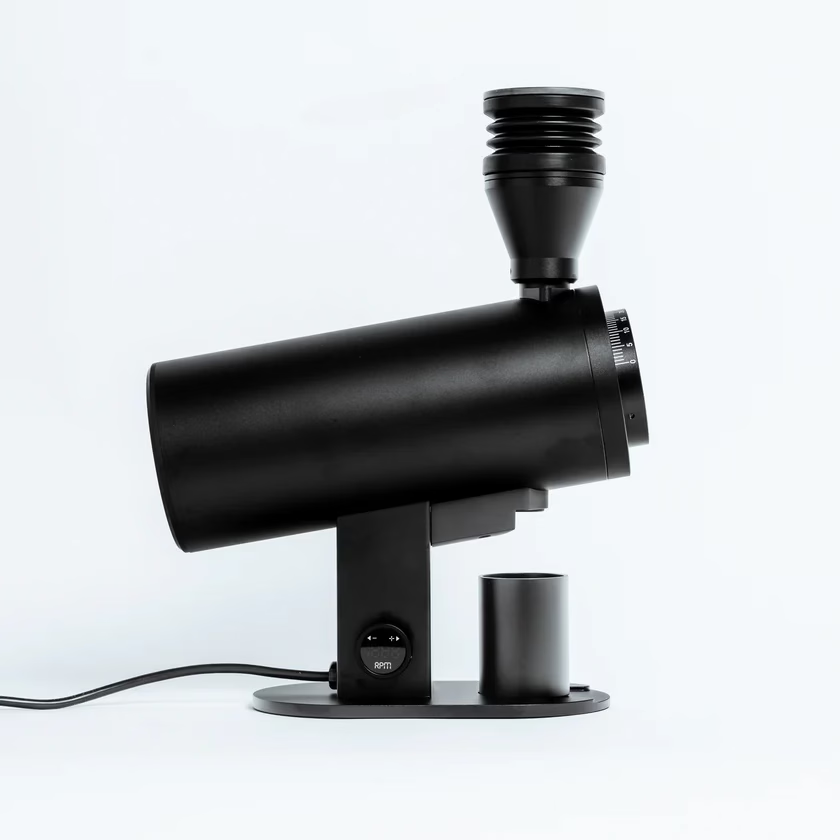Unlock the Perfect Shot: A Guide To Choosing an Electric Espresso Grinder

Looking for an electric espresso grinder but not sure where to begin? Here are a few key things to keep in mind.
BY EMMA MORRIS
BARISTA MAGAZINE ONLINE
Featured photo by Becca Tapert
“Burr” this, “grind adjustment” that, the world of electric espresso grinders can be pretty overwhelming. When you then step into the commercial world and you want to access some serious consistency from your grinder, it seems to get all the more complicated. Fear not, as we’ve broken it down into 5 simple steps for you to work through to find what will work for you, along with some overall recommendations with our personal favorites.
Whether you’re a small start-up coffee van or you’re looking to kit out multiple coffee shops, we’ve got you covered. Read on for a list of things to consider when choosing the right electric espresso grinder for you.


1. Budget
The best place to start to help you narrow down your options is to decide on a budget. Typically you’d be looking at a minimum of around $160 USD for the cheapest electric coffee grinder on the market, and for the most premium options on the market within the commercial space, they can be closer to $2,000. As a guide, to get yourself a good quality electric grinder, you’ll be looking at around $300, then as the cost gets higher, they become more streamlined and innovative. So, if possible, try to set your budget somewhere in the region of $300 to $2,500.
2. Burr Sytem
The majority of electric coffee grinders do their work with burrs, which are the grinding surfaces themselves that helps you to get to the end result. There are two different types of burrs;
- Flat burrs: two rings that lie flat on one another and grind horizontally.
- Conical burrs: one cone shaped burr sits inside another and grinds vertically.
The main difference between the two is that flat burrs provide a more consistent grind, and so for an electric grinder in a commercial space, you’re going to likely want something with more consistency. So, make sure to look at electric coffee grinders with flat burrs. Conicals are better suited to home use if you want a bit more differentiation day to day in the grind. Flat burrs also run at much higher speeds, but we’ll get onto this.
3. Grind Adjustment: Step or Stepless
The next thing to consider is whether you’re going to opt for stepped or stepless grind adjustments. The difference here is that a stepped grinder has a number of pre-set options for different grind sizes, whereas with stepless, it’s a dial that enables micro-adjustments.
For commercial settings, I’d absolutely recommend a stepless adjustment, as you can access much better precision and you can also experiment with different sizes for your espresso brewing to find a coffee’s “sweet spot.” Being able to fine-tune is crucial for accessing the perfect espresso grind to maximize extraction and flavor.


4. Speed and Temperature
Another consideration is the speed of the grind. As a busy barista, being able to freshly grind beans for each brew without leaving customers waiting for too long is key. An added bonus of choosing a flat burr grinder is that they’re significantly faster, so you’re already half way there. Flat burr electric grinders operate at much higher speeds, ranging from 10,000 to 20,000 RPM, which is great. However, this can also mean that more heat is generated, which can impact the flavor of the coffee. So, while it’s important to choose a fast grinder, you also need one with features that minimize heat generation.
5. Grind Retention
Last but not least, you want to ensure that the electric grinder you choose minimizes grind retention. When coffee beans are grinding, static is generated, and this can cause the grounds to get stuck in the grinder. Not only does this waste coffee, but it can get pretty messy, so you want an electric grinder that has features to reduce static and minimize retention.
Summary + a Manufacturer’s Perspective
To summarize, here are the core components you should be looking for:
- Set your budget between $300 and $2,500 USD
- Focus on a grinder with flat burrs for consistency and speed
- Choose a stepless adjustment for optimal precision and control
- Ensure grinder is quick without overheating
- Look for a low retention grinder with minimal static
James Bullock, founder of Earl Coffee—a coffee equipment company based in Manchester, U.K.—shares some information on the coffee grinders that his brand offers. He explains that he first launched Earl Coffee after feeling frustration with expensive equipment on the market that often didn’t deliver in terms of performance.
James shares his top recommendations from his shop for anyone based in the U.K., based on his own experience and feedback from his commercial customers: “If you’re a smaller coffee shop looking for a great option on the lower side of the budget, our Eureka coffee grinders are just fantastic. The Eureka Mignon Zero especially ticks all the boxes above, (staying affordable while) giving the performance and quality of equivalents that are a much higher price point. Flat burrs, stepless adjustment, speed without overheating and low retention make this a winner.”



“For larger coffee shops that need to grind beans in the most efficient, consistent and superior way possible, and have a bit more room with the budget, the DF83V grinder is an ideal choice,” he adds. “If you’re looking for a grinder that fits seamlessly into a professional setting, this is a cutting edge model that is simply engineered for power and precision.”
In conclusion, choosing the right electric espresso grinder for your commercial needs doesn’t have to be overwhelming. By focusing on a few key factors, you can find a machine that offers both quality and efficiency. Whether you’re a small café or managing multiple locations, understanding these components will help you make an informed decision so that you can unlock the perfect shot every time.
ABOUT THE AUTHOR
Emma Morris is a freelance writer with a love for all things food and drink. Her main passion is coffee, covering everything from the weird and wonderful ways it can be used in savory dishes through to the nitty gritty details of how to consistently grind for an exceptional home brewing experience. When she isn’t writing or making it her mission to visit every coffee shop in Manchester, you’ll find her out in the Peak District or Lake District on a long walk with a pastry or two.
Subscribe and More!
As always, you can read Barista Magazine in paper by subscribing or ordering an issue.
Read the August + September 2025 Issue for free with our digital edition.
For free access to more than five years’ worth of issues, visit our digital edition archives here.
Source: Barista Magazine



